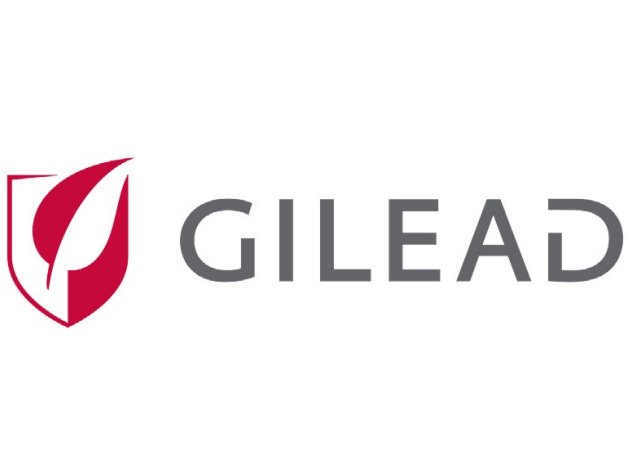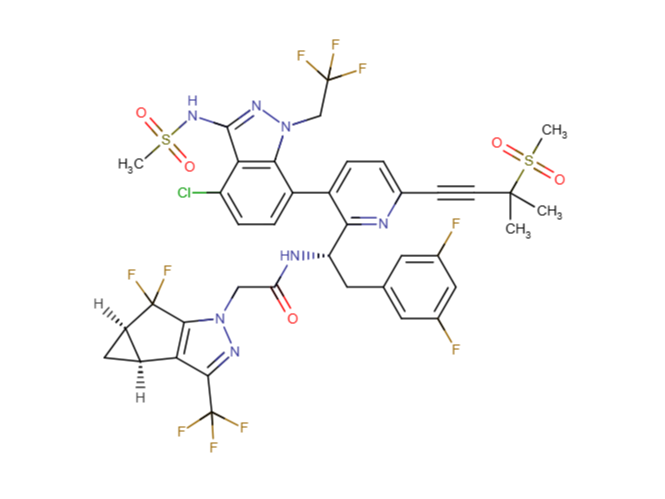Drug information
Lenacapavir Once-Yearly
Not provided
Small molecule
Once yearly lenacapavir (LEN) is an investigational intramuscular injectable formulation currently in clinical development for potential once-yearly HIV pre-exposure prophylaxis (PrEP). A phase I trial evaluating two once-yearly formulations found that a single 5000 mg intramuscular dose of lenacapavir resulted in sustained median plasma concentrations above those of the twice-yearly subcutaneous formulation (927 mg) for at least 56 weeks. Notably, the median concentrations at weeks 52 and 56 for the intramuscular formulations (50.7-65.6 ng/mL) were higher than the median concentration at week 26 (23.4 ng/mL) observed in PURPOSE 1 and 2. Once-yearly intramuscular lenacapavir may therefore further improve PrEP adherence, persistence, and scalability by offering reduced dosing frequency.
Formulation is currently in early clinical development and not yet approved in any jurisdiction.
Unknown
Therapeutic area(s)
- HIV
- Pre-Exposure Prophylaxis (PrEP)
- Prevention
Administration route
Intramuscular
Associated long-acting platforms
Aqueous Solution
Use of drug
- Administered by a community health worker
- Administered by a nurse
- Administered by a specialty health worker
- Self-administered
- To be determined
Not provided
Dosage
5000 mg - 2x5mL (although lower dosing might be sought with 2x3mL injections)
Once yearly
Not provided
Loading dose to be determined
Once-yearly intramuscular lenacapavir (5000 mg) provided higher Ctrough levels than the twice-yearly subcutaneous formulation. Future development suggests a lower optimal dose for the intramuscular option. A significant difference in the Phase I trial was the absence of oral loading doses for the once-yearly intramuscular formulation, which were required for the twice-yearly subcutaneous version due to its slow initial release. The intramuscular formulation also exhibited a faster initial increase in lenacapavir blood plasma concentration.
Not provided
Formulations
Compare
Cabotegravir and Lenacapavir
Lenacapavir Once-Yearly
MK-8591D (Islatravir and Lenacapavir)
Teropavimab and Zinlirvimab
Associated technologies
Not provided
Comment & Information
Developer(s)

Gilead Sciences, Inc. is a multinational biopharmaceutical company that develops and manufactures innovative medicines for life-threatening diseases, including anti-viral therapeutics for HIV/AIDS, Hepatitis B, Hepatitis C and Covid-19. Headquartered in Foster City, California, Gilead was originally founded in 1987 and is currently listed on both the S&P 500 and the NASDAQ Biotechnology Index.
Drug structure
Scale-up and manufacturing prospects
Not provided
Not provided
Not provided
Not provided
Excipients
Not provided
Not provided
Not provided
Delivery device(s)
No delivery device
There are either no relevant patents or these were not yet submitted to LAPaL
Publications
Pharmacokinetics and safety of once-yearly lenacapavir: a phase 1, open-label study. Jogiraju, Vamshi et al. The Lancet, Volume 405, Issue 10485, 1147 - 1154
Background
Long-acting antiretrovirals can address barriers to HIV pre-exposure prophylaxis (PrEP), such as stigma and adherence. In two phase 3 trials, twice-yearly subcutaneous lenacapavir was safe and highly efficacious for PrEP in diverse populations. Furthering long-acting PrEP efforts, this study assessed the pharmacokinetics and safety of two once-yearly intramuscular lenacapavir formulations.
Methods
This phase 1, open-label study in participants aged 18–55 years without HIV evaluated the pharmacokinetics, safety, and tolerability of two lenacapavir free acid formulations administered by ventrogluteal intramuscular injection as a single 5000 mg dose (formulation 1 with 5% w/w ethanol, formulation 2 with 10% w/w ethanol). Pharmacokinetic samples were collected at prespecified timepoints up to 56 weeks. Lenacapavir plasma concentrations were measured with a validated liquid chromatography–tandem mass spectrometry method and summarised with non-compartmental analysis. Pharmacokinetic parameters evaluated included the area under the concentration–time curve for the once-yearly dosing interval calculated from days 1 to 365 (AUCdays 1–365), peak plasma concentration, time to reach peak plasma concentration, and trough concentration (Ctrough). Plasma concentration data from phase 3 studies of twice-yearly subcutaneous lenacapavir (PURPOSE 1 and PURPOSE 2) were pooled for comparison with once-yearly intramuscular lenacapavir formulations. Safety and tolerability, including participant-reported pain scores, were assessed.
Findings
20 participants received lenacapavir formulation 1 and 20 received lenacapavir formulation 2. For estimation of pharmacokinetic parameters, sample size varied over time with at least 13 participants (formulation 1) and at least 19 participants (formulation 2) due to early discontinuations for reasons unrelated to the study drug. Following administration of intramuscular lenacapavir, concentrations increased rapidly, and median time to maximum concentration was 84·1 days (IQR 56·1–112·0) for formulation 1 and 69·9 days (55·3–105·5) for formulation 2. The highest median concentration of once-yearly intramuscular lenacapavir (247·0 ng/mL [IQR 184·0–346·0] for formulation 1, 336·0 ng/mL [233·5–474·3] for formulation 2) remained above the highest median twice-yearly subcutaneous lenacapavir concentration (67·3 ng/mL [46·8–91·4]). Median Ctrough at the end of 52 weeks for formulation 1 was 57·0 ng/mL (IQR 49·9–72·4) and for formulation 2 was 65·6 ng/mL (41·8–87·1), exceeding the median twice-yearly subcutaneous lenacapavir Ctrough of 23·4 ng/mL (15·7–34·3) at the end of 26 weeks. Median AUCdays 1–365 for formulation 1 was 1011·1 h*μg/mL (IQR 881·0–1490·2) and for formulation 2 was 1274·0 h*μg/mL (1177·3–1704·8). Adverse events were mostly grade 1 or 2. The most common was injection-site pain (16 [80%] participants given formulation 1, 15 [75%] given formulation 2), which was generally mild, resolved within 1 week, and was substantially reduced by pretreatment with ice.
Interpretation
Following administration of once-yearly intramuscular lenacapavir, median plasma concentrations exceeded those associated with efficacy in phase 3 studies of twice-yearly subcutaneous lenacapavir for PrEP for at least 56 weeks. Both formulations were safe and well tolerated. These data show the potential for biomedical HIV prevention with a once-yearly dosing interval.
Additional documents
No documents were uploaded
Useful links
Collaborate for development
Consider on a case by case basis, collaborating on developing long acting products with potential significant public health impact, especially for low- and middle-income countries (LMICs), utilising the referred to long-acting technology
Share technical information for match-making assessment
Provide necessary technical information to a potential partner, under confidentiality agreement, to enable preliminary assessment of whether specific medicines of public health importance in LMICs might be compatible with the referred to long-acting technology to achieve a public health benefit
Work with MPP to expand access in LMICs
In the event that a product using the referred to long-acting technology is successfully developed, the technology IP holder(s) will work with the Medicines Patent Pool towards putting in place the most appropriate strategy for timely and affordable access in low and middle-income countries, including through licensing
